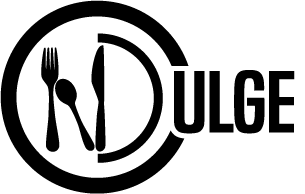Operational Drift in Restaurants: The Silent Profit Killer of Q4
- Admin
- 9 minutes ago
- 3 min read

It doesn’t start with chaos. It starts with comfort. Sales look strong. Labor is steady. Guests seem happy. But under the surface, something is slipping — quietly, invisibly. That’s operational drift in restaurants — the slow, silent decay of discipline inside operations that once ran with precision. It’s the hidden profit killer that strikes hardest in Q4, when leaders are chasing revenue, not refinement.
Every unchecked prep list. Every “we’ll fix it tomorrow.” Every skipped standard.
Each one compounds until the system stops serving the operator — and starts serving the chaos.
What Is Operational Drift in Restaurants?
Operational drift is what happens when systems weaken through neglect, not intent. It’s the erosion of accountability, consistency, and inspection — usually during the busiest, most profitable time of year. It isn’t a breakdown of structure. It’s a slow fade of standards.
Operators don’t notice it because the numbers still look good. But behind every strong sales week is a hidden decline in control — tighter margins, higher waste, weaker communication, and a team that’s executing tasks, not standards.
Why Operational Drift Is the Silent Profit Killer of Q4
Q4 doesn’t forgive drift — it exposes it.
When restaurants hit their peak volume, every minor weakness compounds:
Prep inefficiencies double.
Waste multiplies.
Execution gaps widen.
Managers stop coaching and start firefighting.
By December, the operation feels heavy — and leadership mistakes exhaustion for effort.
The problem isn’t a lack of hustle. It’s a lack of recalibration.
The Three Forms of Drift
1. Procedural Drift:
When teams stop following systems exactly as written — not because they disagree, but because shortcuts feel faster.Example: prep checklists half-completed or pre-shift huddles skipped “just for today.”
2. Leadership Drift
When managers shift from inspection to assumption. They still care — but they’re running too hot to verify.Example: feedback given verbally, but nothing documented; standards discussed, but not enforced.
3. Cultural Drift
When “busy” becomes the new definition of “successful.”Culture stops celebrating precision and starts rewarding speed.Example: praise for surviving chaos instead of preventing it.
How to Detect Operational Drift Before It Costs You
Watch your language.When you hear “good enough,” “for now,” or “we’ll fix it after the rush,” drift has started.
Audit your systems.If your SOPs aren’t being verified daily, they’re no longer systems — they’re suggestions.
Check your meetings.If meetings recap results instead of recalibrating expectations, you’re managing history, not performance.
Measure your fatigue.Burnout isn’t from overwork — it’s from working without control.
Realignment Is the Cure
Drift doesn’t require reinvention. It requires realignment. You don’t need new systems — you need to recommit to the ones that already work.
At NDulge Restaurant Consulting, we help restaurants identify and correct operational drift before it impacts profit.We rebuild discipline, communication, and accountability through tailored systems that keep operations consistent — especially when volume spikes.
Because drift doesn’t fix itself. It waits until you’re distracted, then erodes what you’ve built.
Stop Operational Drift Before Q4 Does It for You
If your standards have started to blur or your systems feel reactive instead of intentional, it’s time to realign.
👉 Book a discovery call to audit your operation before Q4 does it for you.🔗 https://calendly.com/nlee-ndulgerc/discovery-call-with-nate-from-ndulge



